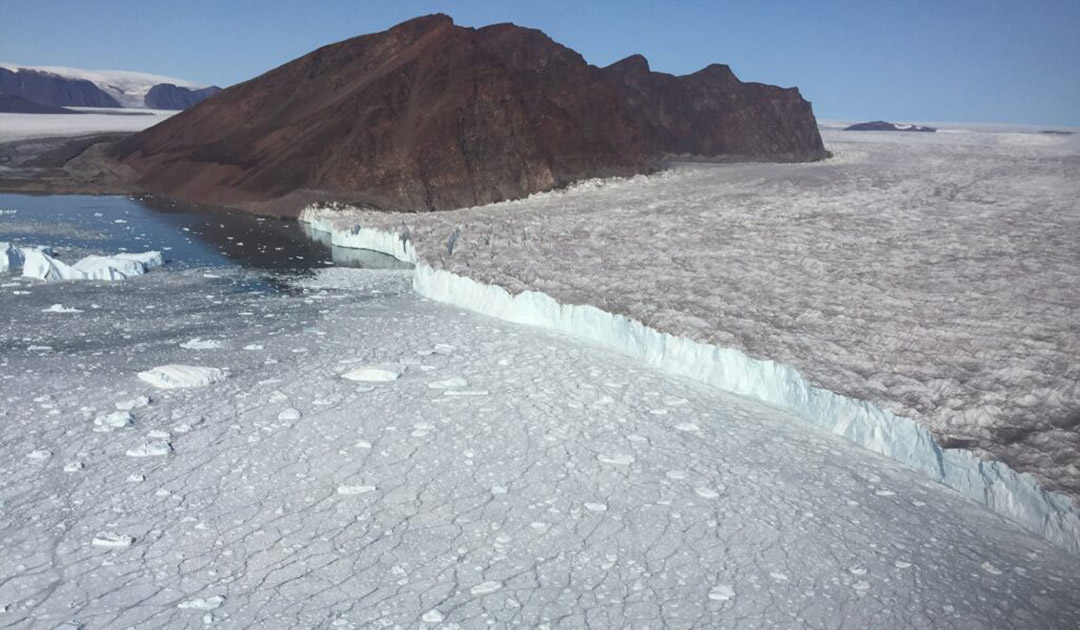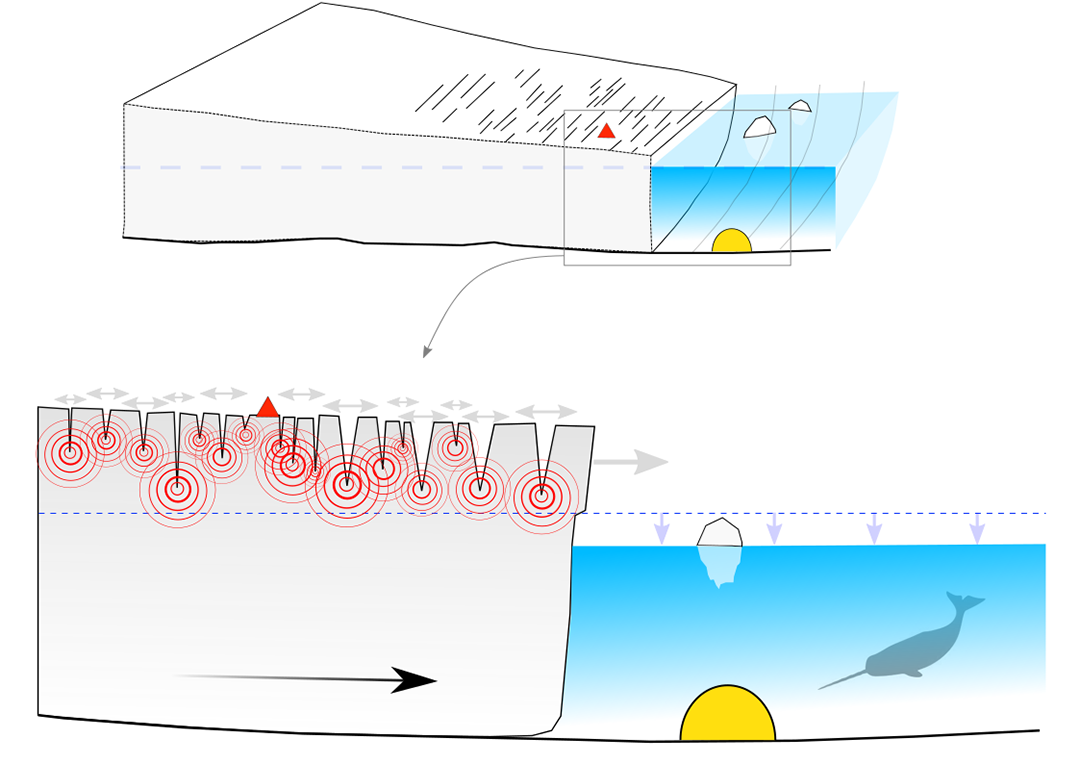
Until now, seismologists considered continuous small amplitudes of seismometers registering earth tremors close to calving glacier fronts as “background noise”. In a recent study, scientists from Hokkaido University have now used a special underwater seismometer to prove that this noise is caused by the forward movement of glaciers on the bedrock. The data obtained can also be used to assess glacier dynamics.
The rate at which a glacier flowing into the sea releases ice to the ocean is determined by the basal slip of the glacier. Because glacier fronts are among the most difficult places to access due to calving, highly crevassed surfaces, and harsh weather conditions, research and observation in close proximity is a major challenge.
A team of researchers from Hokkaido University led by Evgeny A. Podolskiy, assistant professor at the Arctic Research Center and lead author of the study, has therefore developed a special seismometer for measurements on the seafloor. Sensors available so far can be placed on, inside or below the glacier, but they come with disadvantages. When surface sensors are used, for example, wind and tide-modulated crevasses cause noise that can obscure all other signals. In addition, scientists struggle with common problems such as station drift, melting, cold temperatures, and the destruction of instruments.

Therefore, the authors of the new study, published in Nature Communications, used a specially developed underwater seismometer in combination with surface sensors. They fixed the ocean bottom seismometer (OBS) near the calving front of the Bowdoin Glacier (Kangerluarsuup Sermia) in northwest Greenland near Thule. This allowed the researchers to listen to ice tremors caused by basal movement of the glacier without recording the disturbing seismic noise at the surface. Later, data collected by the OBS were correlated with data from seismic and ice velocity measurements at the ice surface.
“Future research in this area could focus on replicating and expanding upon the findings of this study at other glaciers. The experimental support for the relationship between glacier tremors and tectonic tremors suggests that a long-term multidisciplinary approach would be beneficial in fully understanding this phenomenon.”
Evgeny A. Podolskiy, Assistant Professor at the Arctic Research Center, Hokkaido University.

In their analysis, the scientists found that the glacier generates a continuous seismic tremor. In particular, the broadband signal (3.5 – 14.0 Hertz) recorded by the OBS correlated well with the movement of the glacier measured by GPS, which also qualifies this method for studying glacier dynamics, according to the authors. At the same time, the research team was able to identify tectonically induced seismic signals with the help of the OBS.
The study results also show that the seismic signals of the glacier movements resemble those of slow earthquakes. In their study, the researchers write that the characteristics of the Bowdoin glacier tremor are similar to tectonic quakes in Japan and Canada.
Julia Hager, PolarJournal
Link to the study: Evgeny A. Podolskiy, Yoshio Murai, Naoya Kanna, Shin Sugiyama. Ocean-bottom and surface seismometers reveal continuous glacial tremor and slip. Nature Communications. June 24, 2021. DOI: 10.1038/s41467-021-24142-4
More on the subject:





